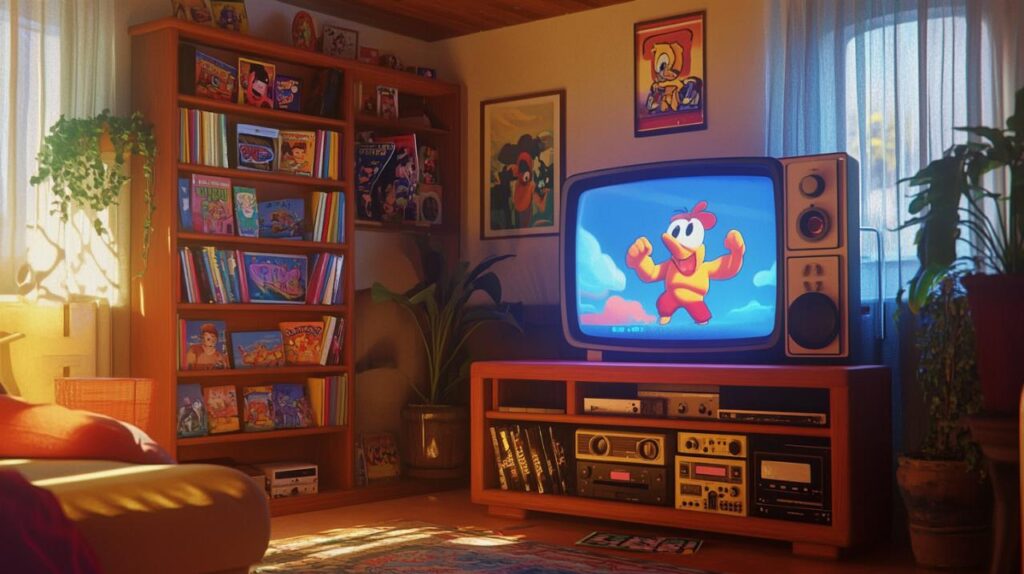The 1990s were a remarkable period for children's television, marking a decade when animated programmes became more than just entertainment. For those who spent their Saturday mornings glued to the telly, these shows weren't merely a way to pass time but rather a formative experience that shaped personalities, sparked imaginations, and created memories that remain vivid decades later. The colourful characters and inventive storylines of that era transcended simple amusement, embedding themselves deeply into the cultural fabric of an entire generation.
Saturday morning classics that shaped our childhood
The golden era of animated adventures
The decade opened with a flourish of creativity that transformed what children could expect from their favourite programmes. Shows like Rugrats, which first appeared in 1991 and continued well into the 2000s, offered a fresh perspective by allowing viewers to experience the world through the eyes of toddlers. The adventures of Tommy, Chuckie, and their pals were not just entertaining but also remarkably insightful, capturing the wonder and confusion of early childhood in a way that resonated with both youngsters and nostalgic adults. This programme exemplified how animated series could be clever without being condescending, adventurous without losing heart.
Meanwhile, nostalgic cartoons from the 90s such as Animaniacs brought a different flavour to Saturday mornings between 1993 and 1998. The Warner siblings and their anarchic humour pushed boundaries with rapid-fire jokes, cultural references, and a willingness to be utterly daft while simultaneously being surprisingly sophisticated. This show became a touchstone for children who appreciated wit alongside slapstick, proving that animated content could appeal to multiple age groups simultaneously. The zany antics and memorable musical numbers turned ordinary weekends into extraordinary experiences.
Batman: The Animated Series, which aired from 1992 to 1995, redefined what superhero animation could achieve. With its distinctive art deco style and mature storytelling, this programme captivated audiences who craved something darker and more atmospheric. The brooding tone and complex characters demonstrated that cartoons could tackle serious themes without losing their appeal to younger viewers. This series set a benchmark for quality animation that influenced countless productions in the years that followed, establishing that children's programming could be both artistically ambitious and commercially successful.
Characters that became our mates
The characters from these programmes became fixtures in the lives of children across the United Kingdom. Arthur, which began in 1996 and continues to this day, introduced viewers to an aardvark navigating the trials of primary school life. The relatable dilemmas faced by Arthur and his friends addressed everything from peer pressure to family dynamics, providing gentle guidance wrapped in entertaining storylines. This show became a comforting presence, offering reassurance that everyone faced challenges and that kindness and perseverance could see you through.
Hey Arnold!, running from 1996 to 2004, presented a different kind of hero altogether. Arnold's football-shaped head became iconic, but it was his thoughtful nature and willingness to help others that truly defined the character. Set in a bustling urban environment, the programme explored themes of community, friendship, and empathy in ways that felt authentic and meaningful. The diverse cast of characters reflected a reality that many viewers recognised, making the show both relatable and aspirational.
Dexter's Laboratory, which entertained audiences from 1996 to 2003, brought science and sibling rivalry together in a delightfully chaotic mix. The boy genius with his secret laboratory and his pestering sister Dee Dee created a dynamic that was equal parts frustrating and hilarious. This programme celebrated curiosity and intelligence whilst acknowledging that even the cleverest plans could go spectacularly wrong. The inventive scenarios and expressive animation style made every episode a visual treat that encouraged children to embrace their own creativity and imagination.
Cultural Impact and Lasting Legacy of 90s Animation

How these programmes influenced modern television
The influence of these animated series extends far beyond their original broadcast dates. Pokemon, which launched in 1997 and remains a global phenomenon, revolutionised how children's entertainment could expand into multimedia empires. What began as a cartoon swiftly became a cultural juggernaut encompassing trading cards, video games, films, and merchandise that continues to thrive today. The programme's emphasis on collection, strategy, and friendship created a blueprint for franchises that followed, demonstrating the commercial potential of well-crafted animated content.
Shows like The Magic School Bus, which aired from 1994 to 1997, proved that educational content could be genuinely entertaining. Ms Frizzle's wild field trips made learning about science exciting rather than tedious, inspiring curiosity about the natural world in countless young minds. This approach to edutainment influenced subsequent programmes that sought to inform whilst delighting their audiences. The show's legacy can be seen in modern educational content that prioritises engagement and wonder over rote memorisation.
The Animals of Farthing Wood, broadcast between 1992 and 1995, took a distinctly different approach by presenting mature themes within an animated framework. This adaptation of the beloved books didn't shy away from depicting the harsh realities of nature, including genuine peril and loss. Such storytelling demonstrated that children's programming could respect its audience's intelligence and emotional capacity, paving the way for more nuanced animated narratives. The programme's willingness to tackle difficult subjects with sensitivity and honesty left a lasting impression on viewers who appreciated its depth and authenticity.
The lessons and values we learnt from our favourite shows
Beyond entertainment, these animated series imparted valuable lessons that shaped the moral compass of an entire generation. Courage The Cowardly Dog, which ran from 1999 to 2002, explored themes of fear and bravery in ways that were both unsettling and profound. Despite its often eerie atmosphere, the show ultimately conveyed that courage wasn't the absence of fear but rather the willingness to act despite it. This message resonated with children facing their own anxieties, offering reassurance that vulnerability didn't equate to weakness.
Recess, airing from 1997 to 2001, celebrated the importance of friendship, loyalty, and standing up for what's right. The playground adventures of T.J. and his gang addressed social hierarchies, justice, and the value of community in accessible ways. The show validated the experiences of school-aged children whilst encouraging them to challenge unfairness and support one another. These themes of solidarity and integrity remain relevant, testament to the thoughtful writing that underpinned the programme's comedic exterior.
Even the more surreal offerings like CatDog, which entertained viewers from 1998 to 2005, imparted subtle lessons about compromise and accepting differences. The conjoined brothers with their opposing personalities had to navigate a world that didn't quite understand them, yet they persevered through cooperation and mutual respect. This bizarre premise became a vehicle for exploring how individuals with contrasting needs and desires could find harmony. The show's absurdist humour never overshadowed its underlying message about tolerance and understanding.
The enduring affection for these programmes speaks to their quality and the profound impact they had during a formative period. Whether it was the cerebral schemes of Pinky and The Brain from 1995 to 1998, the adorable problem-solving of Blue's Clues running from 1996 to 2006, or the spectacular battles of Dragon Ball Z from 1989 to 1996, each series contributed something unique to the cultural landscape. These animated adventures weren't merely background noise but rather cherished companions that enriched childhood and continue to evoke warm memories. For those who experienced this golden age of animation, the legacy of these programmes remains a treasured part of their personal history, a testament to the power of thoughtful storytelling and creative vision.

